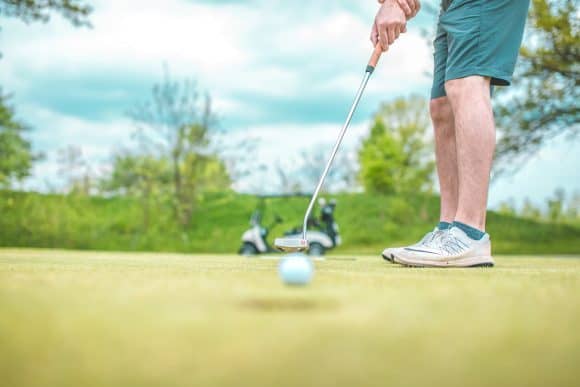
Ever heard of tennis elbow? Well today we’re talking about golfer’s elbow! The name is often questioned as 90% of cases are unrelated to sport. In a golf swing the tendon responsible for the pain response is stressed, however, in the majority of presentations the cause of the condition is overuse. This means the condition is often seen in occupations such as carpentry and plumbing.
Also known as ‘medial epicondylitis’, golfer’s elbow is most often an overload injury caused by degeneration of the tendon attaching to the humerus (elbow bone) (more about tendon injuries here). Repetitive contractions of the muscles which attach here can lead to tendinopathy which is characterised by rearrangement and deterioration of the muscle fibers of the tendon.
The most sensitive area to touch is located near the area which the flexor group of muscles attach to, the medial epicondyle which is found on the inside of the elbow. Pain often radiates up and down the arm, but most commonly is felt on the inside of the forearm. Swelling is usually not present due to the actual process of tendinopathy not being acute inflammation but rather a chronic degenerative condition.
Often people suffering from this condition will have reduced movement in the elbow and weakness in wrist movement. This is due to the muscle pathway over the wrist to allow wrist flexion. Pain can often be felt when gripping and lifting a heavy object, or when resisting wrist flexion.
The aims of conservative (non surgical) management are:
The strategies your physiotherapist use may include a phase of reduced loading of the wrist (ie stop doing the stuff that hurts!!) by addressing the possible causes which may have brought the pain on. Based on your response, your physiotherapist will then progress to controlled loading and strengthening of the muscles. This has been shown to be beneficial, as complete rest of the muscles for too long can actually exacerbate the condition.
Due to the chronic nature of this medial epicondylitis, it is normally recommended that conservative management be used for between 6 and12 months before surgical options be considered. Your physiotherapist may also use other treatment options such as bracing, manual therapy and shock wave therapy.
If you’d like to know more – feel free to get in touch.